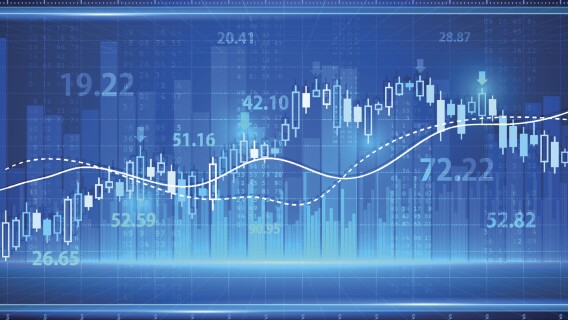To successfully navigate the market, it’s imperative to learn how to understand stock charts. But what time frame is appropriate? We’ll go over some of them below.
A chart allows you to track a stock’s trading history, shows you its current status. It alerts you to whether big institutions, like hedge funds, mutual funds, exchange-traded funds, banks, and insurance companies are buying or selling.
Charts show you a detailed history of a security’s price and volume movements to help you understand where it’s been, where it stands now, and where it’s likely to go.
[text_ad]
Once you’ve learned how to understand stock charts, you can tell, based on a stock’s history, whether the character of trading has changed, whether some company-specific event has increased or decreased investor conviction, and whether a rally may be starting or ending.
I use several different time frames to understand a stock:
- Daily: A daily chart gives you a granular look at current support and resistance. Each bar on this chart represents a single day’s activity and can help you understand what’s happening in the short term. For example, you can easily see if a stock is getting support at a key moving average, and you can see if it’s near a buy point.
- Weekly: A weekly chart lets you easily spot long- and medium-term trends and identify chart patterns. You can also compare a stock’s performance relative to its index or the broader market.
- Monthly: I use monthly charts to understand a stock’s longer-term history, perhaps going back to its IPO, or even to get a sense of strength over the past year. This won’t help you identify patterns as well, but it can give you an excellent perspective.
- Intraday: Intraday time frames give you a sense of whether the big institutions’ trading desks are buying or selling throughout the session. It can also easily show you whether gaps are closing and if a stock is reversing course during the trading day. You can use varying intraday time frames, such as one minute, five minutes, 10 minutes, 30 minutes, or an hour.
So why bother learning how to understand stock charts? Why not just check the earnings and sales and simply use the fundamentals as your indicators?
The short answer is: Use both.
The combination of fundamentals and chart reading can clue you into stocks with the potential to stage a fresh rally.
You’ll often hear the term “technicals” referring to chart reading. Unfortunately, that term can make the process of learning charts sound more complex and intimidating than it really is.
In truth, learning how to understand stock charts - or “technical analysis” - gives you a shortcut to uncovering opportunities or risks. It’s one more tool in the box to help you.
Technical analysis can help you size up the potential opportunities and risks of buying or selling a stock without flying blind.
We’re lucky today that we have many excellent charting programs. That wasn’t always true.
One often-told story centered around Investor’s Business Daily founder Bill O’Neil, who, when working as a stockbroker in the 1960s and 1970s, would spend hours marking up charts on paper.
If you read the classic trading book Reminiscences of a Stock Operator you may recall Jesse Livermore studying the old ticker tape in the bucket shops, where people essentially gambled on the stock market. He didn’t have the benefit of charts.
Nicolas Darvas was another pre-computer-age investor who relied on his own systems. As a professional dancer, Darvas traveled the world to put on shows. While on the road, he would rely on stock-market tables from the Wall Street Journal to create his own charts. Sometimes, when he was overseas, the Journal would be delivered weeks later and Darvas was forced to use outdated information.
Still, he was able to use his homemade charts to determine the best times to buy and sell, and his story is detailed in the classic investment book, How I Made $2,000,000 in the Stock Market.
Those lessons from many decades ago still apply. The stock market is certainly one area of life where history repeats (or at least rhymes), at least when it comes to prices rising and falling. The same patterns, it turns out, present themselves over and over again. Whether it’s railroad stocks a century ago or the Magnificient Seven and biotech and tech stocks of today, you’ll see the same buy and sell signals.
Some investors claim that today’s algorithms and artificial intelligence have made learning how to understand stock charts obsolete, as the machines have taken the place of human judgment and emotion. However, institutions are staffed by real people, who gauge the market in conjunction with the technology available today.
Market sentiment still plays a role, so don’t throw in the towel assuming the machines are in charge. Even with algorithms, the big institutions still make trading decisions every minute of every day, and chart reading allows you to look over their shoulders and profit from the clues they leave behind.
[author_ad]

